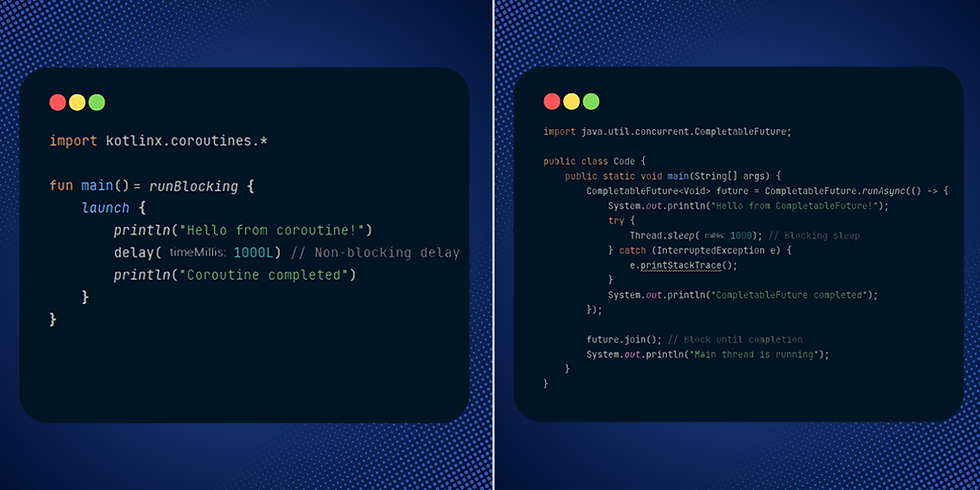Deadlock in Concurrency
- Thalles Vieira
- 7 de set. de 2024
- 2 min de leitura
Concurrent programming is a powerful tool that allows multiple tasks to be executed simultaneously, increasing the efficiency and responsiveness of a system. However, along with its benefits come complex challenges, such as Deadlock. In this article, we will explore this problem and the techniques that can be used to resolve it.
What is Deadlock?
Deadlock occurs when two or more threads become permanently blocked, waiting for resources that will never be released. This problem arises in multitasking systems where shared resources are inadequately handled by the threads.
Okay, but what does that mean? In simpler terms, Deadlock is a problem where two or more threads get stuck in a waiting cycle, each one waiting for the other to release a resource. As a result, none of the threads can make progress, leading the system to a standstill.
Let's look at an example of Deadlock:
Here’s our main class where two threads try to use the resources simultaneously:
When running this code, each thread tries to access one resource and then the other. This can lead to the following scenario:
Thread 1 locks ResourceA and tries to access ResourceB, which is locked by Thread 2.
Thread 2 locks ResourceB and tries to access ResourceA, which is locked by Thread 1.
Now what? What should I do?
Don't worry, let's look at some strategies to solve this.
Avoid Wait Cycles:
One way to avoid deadlocks is to ensure that threads always acquire locks in the same order.
Use Timeout for Locks: Use tryLock with a timeout to prevent a thread from waiting indefinitely for a resource.
Deadlock Detection and Recovery:
Some systems use deadlock detection algorithms to identify when a deadlock occurs and take steps to recover from it, such as aborting one of the threads.
Conclusion
Deadlocks are common issues in concurrent programming that can cause system freezes. Understanding this problem and applying appropriate techniques, such as avoiding wait cycles, using timeouts, and detecting deadlocks, is crucial to developing robust and efficient software. The key to dealing with these challenges is to always carefully plan the use of shared resources and rigorously test your concurrent solutions.




Comentários